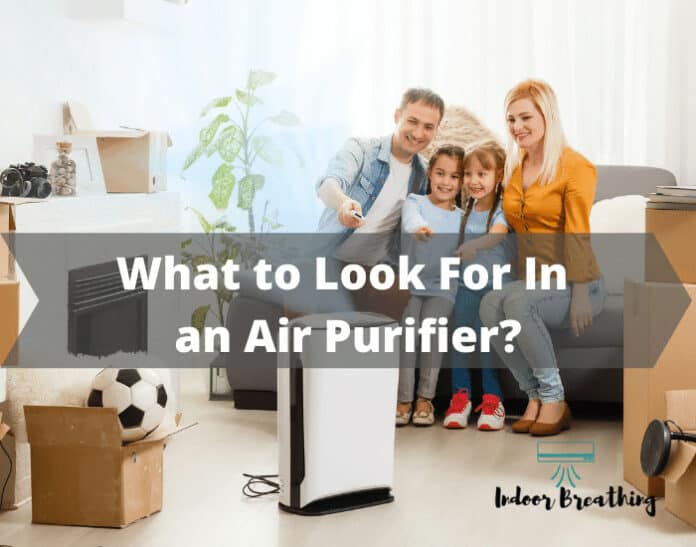Air purifiers effectively sanitize the air, including allergens, pollutants, and poisons. They are the opposite of necessary oil diffusers and humidifiers, adding particles to indoor air. While filters only release particles, purifiers can sanitize them as well.
An easy method to test that your cleanser is working is reviewing the airflow out of your purifier. Air purifiers have a fan that pulls in air from inside the room. As the purifier filters out dangerous contaminants from your air, the purifier will blow out pure air. This article will assist you in finding the best air purifier around.
The first thing you must look for in an air purifier is to compare CADR ratings, which is the best way to notice how the air purifier filters the pollutants effectively. You also need to choose a device that uses a HEPA filter and notice the noise levels to buy the best air purifier.
Table of Contents
How to Pick the Right Air Purifier: What Matters Most?
The amount of your room is an essential element for determining a proper air purifier. Make sure you choose an air purifier that can work in a 20-40% larger space than the room for the finest implementation because larger areas will need larger air purifiers. Hence, The selection of the air purifier also relies on the type of room. Following is some information that might help you buy the best air purifiers. The necessity for an Air Purifier can be diverse for every person. Following are some tips:
- Asthmatic patients should opt for air purifiers containing True-HEPA filters and avoid ozone-based cleaners.
- People who live in construction areas must confirm having a cleaner with a powerful pre-filter. The pre-filters should be exchanged repeatedly.
- People who live in industrial areas must have a purifier that contains Activated Carbon filters to cease the smell in the air.
Types and Levels of filters

Pre-Filters, like non-woven polyester and foam, eliminate large particles like pet hair before the next filtration stage.
True HEPA Filters clean allergens such as animal skin, pollen and mold spores, dander, and dust. HEPA filters can deduct 99.9% of all the particles, as small as 0.3 microns. HEPA air purifier filters have to be modified from time to time. The larger the HEPA filter, the more particles it will release. The filter’s material, size, and construction highly choose the air purifier’s interpretation.
Activated Carbon Filters are used in a mixture with other filters. Activated carbon/charcoal filters help soak odors and gases, thereby balancing chemicals, food smell, smoke, and fumes. Unfortunately, carbon Filters also need to be replaced after use over time.
Germicidal and Antibacterial Filters help in eliminating dangerous germs and bacteria.
UV filters and HEPA filters assure the air you breathe hygienically. This filter is commonly used in kitchens, hospitals, labs, and daycare schools to underrate the danger of airborne diseases.
Charged Media Filters incorporate a particle filtration and an electrostatic charge filter to filter particles as small as 0.1 microns. This filter needs to be substituted as well to work effectively.
A photocatalytic Oxidation filter uses a titanium dioxide-coated metal plate and UV light to oxidize and physically break down chemicals during the filtration procedure.
Air Exchange Rate of an Air Cleaner
The air change rate of an air cleaner demonstrates just how many times the cleaner purifies the whole room’s atmosphere in an hour.
CADR Ratings
CADR measures filtered air delivery by an air purifier at its maximum speed setting. It is for both the amount of airflow and particle reduction efficiency. Before buying a purifier, you must look for the CADR, as the higher the CADR, the higher the air purifier’s efficiency for a given room size.
Air Purifier based on Size and Area of Room
The size of your room is an essential aspect of selecting a proper Air purifier. Bigger spaces will require larger air purifiers, so ensure that you buy an air purifier that can work in areas 20-40% larger than the room for the best performance. The selection of the air purifier also relies on the type of room. While buying a cleaner for a bedroom, you need to choose an air purifier that makes less noise so that you can sleep peacefully. A purifier can have irregular settings for a living room, decreasing or changing when no one is in the room.
Warranty and Customer Service
Every air purifier will need modifications after 12 to 18 months. Make sure the after-sale benefit of your product is helpful so that the substitute is easy and quick. Furthermore, your purifier is a significant asset for your home, so make sure you have an extended guarantee on the product to save you from manufacturing faults.
What should you avoid in an air purifier?
1) Never purchase an air purifier from a manufacturer that swears the most decisive engine
The first air purifier to evade brags a super-strong motor. This seems impossible. When air is pushed through an air cleaner at a high rate, the filters won’t be capable of extracting as many venoms, which means that you may be revealed to them longer. If your air purifier uses a HEPA filter, a powerful motor may establish harm over time, as it will fray the strands making up the filter. That, too, will reduce the air purifier’s efficiency if your air purifier uses granulated activated carbon for the reduction of chemicals and odors, excellent. It is one of the essential filters out there. But these filters also work best when the air is permitted to pass through at a slower rate. That way, the carbon can adsorb the most elevated amount of VOCs and toxic chemicals.
2) Never purchase an air purifier that has a medical-grade HEPA filter ONLY
It would help if you never bought the second air purifier with only one filter. The pleated HEPA filter has been shown to remove 99.9 percent of particles with 0.3 microns in size, which is excellent. These filters are essential to people exposed to pollen, dust, and other particles. But particles are all these HEPA filters catching. Odors and chemicals will pass right through, and they can impact your health and well-being in the long term. According to the Canadian government, the longer-term health impacts of chemical disclosure might include weakening of the immune system, organ damage, congenital disabilities, reproductive problems impacting children’s mental cognitive, or physical growth, and cancer. The EPA also believes that respiring contaminated air can lead to short-term and long-term health effects. Direct effects are often similar to colds and may include irritated eyes, sneezing, throat and nose, problem breathing, and more.
3) Never buy an air purifier that has less than a 2.5-inch deep bed of carbon
The third air purifier you should never buy does not have sufficient carbon. Activated carbon is the most significant filter to get rid of chemicals and odors in the ambient air. But just because a manufacturer says that the unit features an activated carbon filter, that does not mean it comes with enough carbon or comes with the right type of carbon. For example, some manufacturers spray a thin layer of activated carbon over the mesh and call that an activated carbon filter. Technically, they are correct, but it won’t be helpful for long.
FAQ
-
-
How do you know what size air purifier you require?
-
Typically, the CADR of your air purifier should be equivalent to at least two-thirds of the room’s area. So, for example, a space that is 15 feet by 10 feet has an area of 150 square feet, so an air purifier for that room should have a smoke CADR of at least 100.
Conclusion
In particular, these machines may help people who already have conditions that impact the lungs, like cystic fibrosis, asthma, and immune system diseases. If you have a problem combating infections, you must buy an air purifier that might be helpful.


